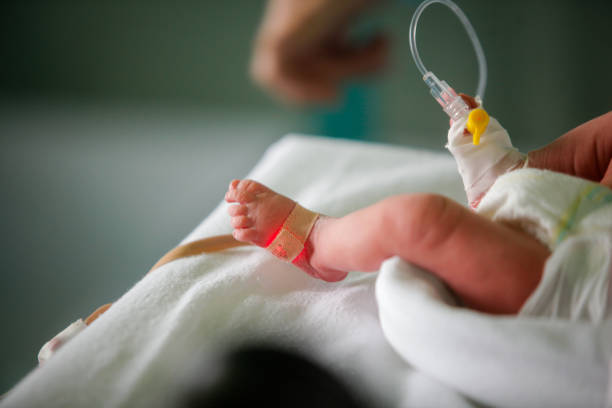Common conditions like jaundice and anemia frequently affect newborns during their early days of life, often as part of their natural adaptation to life outside the womb. While jaundice is typically caused by elevated bilirubin levels and presents as yellowing of the skin and eyes, anemia involves a reduction in red blood cells or hemoglobin, which can impact oxygen delivery. Both conditions, though often mild, may require medical attention to prevent complications. Understanding their causes, symptoms, and treatments is essential for ensuring a healthy start for newborns.

1. Neonatal Jaundice
Jaundice is a yellowish discoloration of the skin and eyes caused by elevated levels of bilirubin, a byproduct of red blood cell breakdown.
Causes of Neonatal Jaundice
- Physiological Jaundice:
- Common in the first week of life due to immature liver function and increased red blood cell turnover.
- Breastfeeding Jaundice:
- Occurs in breastfed babies due to insufficient feeding, leading to dehydration and reduced bilirubin excretion.
- Pathological Jaundice:
- Results from underlying conditions, such as:
- Hemolytic diseases (e.g., Rh or ABO incompatibility).
- Infections (e.g., sepsis or TORCH infections).
- Genetic disorders like G6PD deficiency.
- Results from underlying conditions, such as:
Symptoms of Jaundice
- Yellowing of the skin and eyes, starting on the face and progressing to the body.
- Poor feeding or lethargy in severe cases.
Diagnosis and Treatment
- Diagnosis:
- Bilirubin level measurement using blood tests or transcutaneous bilirubinometry.
- Treatment:
- Phototherapy: The primary treatment, using light to break down bilirubin into a form that can be excreted.
- Exchange Transfusion: For severe cases, replacing the baby’s blood to remove excess bilirubin.
2. Neonatal Anemia
Anemia occurs when a newborn has a lower-than-normal number of red blood cells or hemoglobin, reducing the blood’s ability to carry oxygen.
Causes of Neonatal Anemia
- Physiological Anemia:
- A normal decline in hemoglobin levels occurs around 6–8 weeks as fetal hemoglobin is replaced by adult hemoglobin.
- Blood Loss:
- During or after delivery (e.g., placental abruption or umbilical cord issues).
- Hemolysis:
- Excessive breakdown of red blood cells due to conditions like G6PD deficiency or Rh incompatibility.
- Reduced Production:
- Associated with infections, genetic conditions, or nutrient deficiencies (e.g., iron or vitamin B12).
Symptoms of Anemia
- Pale skin and mucous membranes.
- Rapid breathing or heart rate.
- Poor feeding and lethargy.
Diagnosis and Treatment
- Diagnosis:
- Complete blood count (CBC) to measure hemoglobin and red blood cell levels.
- Treatment:
- Iron Supplementation: For iron-deficiency anemia.
- Blood Transfusions: In severe cases or when caused by blood loss.
- Treating Underlying Conditions: Such as infections or hemolysis.
3. Monitoring and Prevention
- For Jaundice:
- Regular bilirubin monitoring in the first week of life.
- Ensuring adequate feeding to promote bilirubin excretion.
- For Anemia:
- Maternal health and nutrition during pregnancy.
- Early screening in at-risk infants (e.g., those born prematurely or with known conditions).
Conclusion
Jaundice and anemia are common neonatal conditions that require careful attention to ensure the baby’s well-being. While most cases are mild and resolve with minimal intervention, timely diagnosis and appropriate treatment are critical to prevent complications. By understanding these conditions, caregivers and healthcare providers can work together to provide the best care for newborns.






